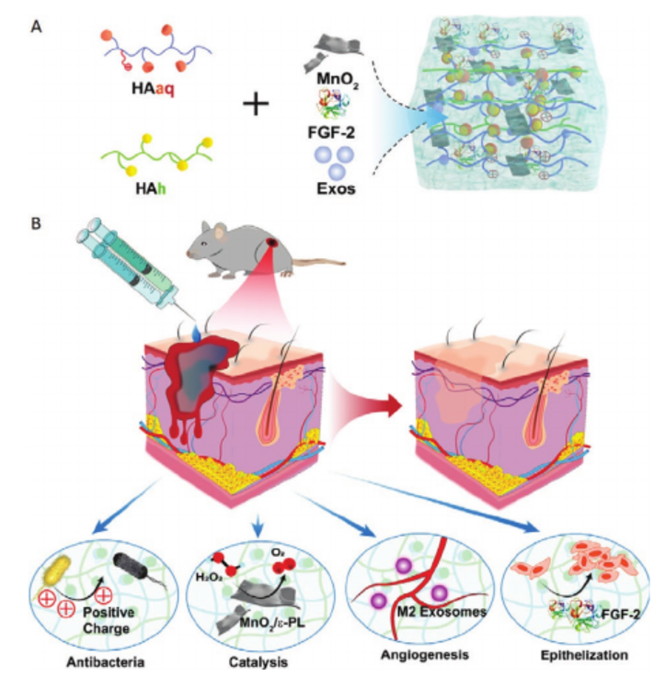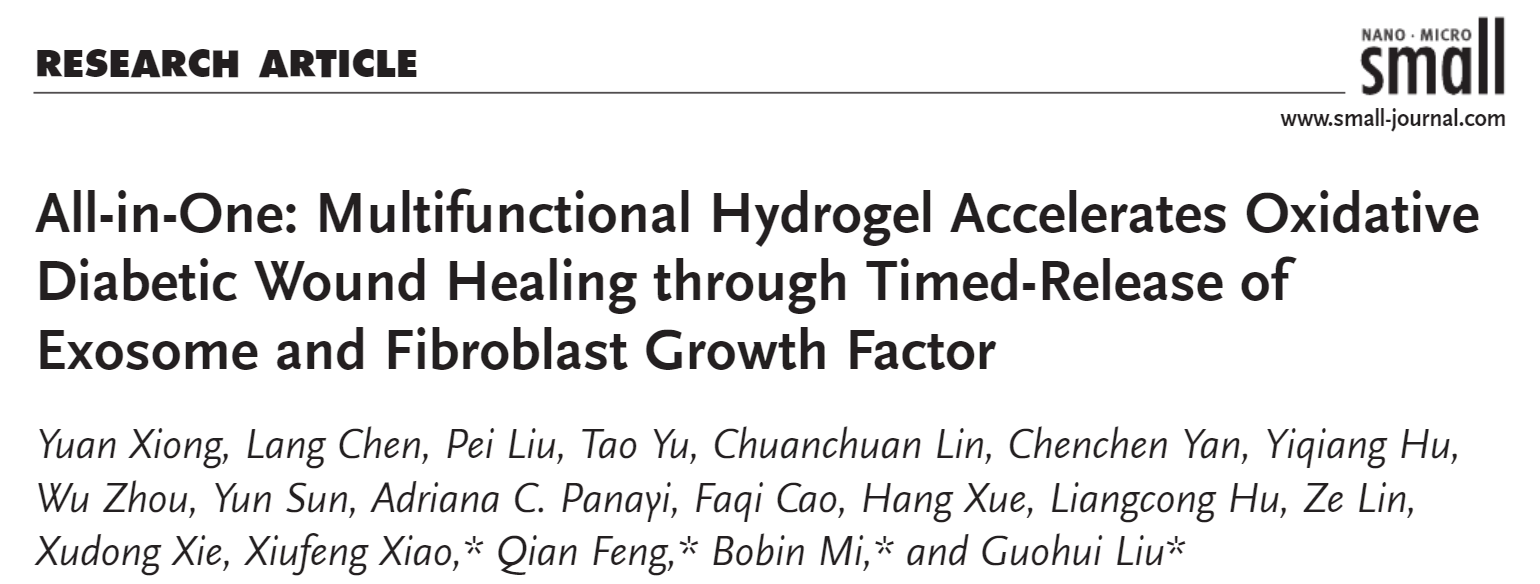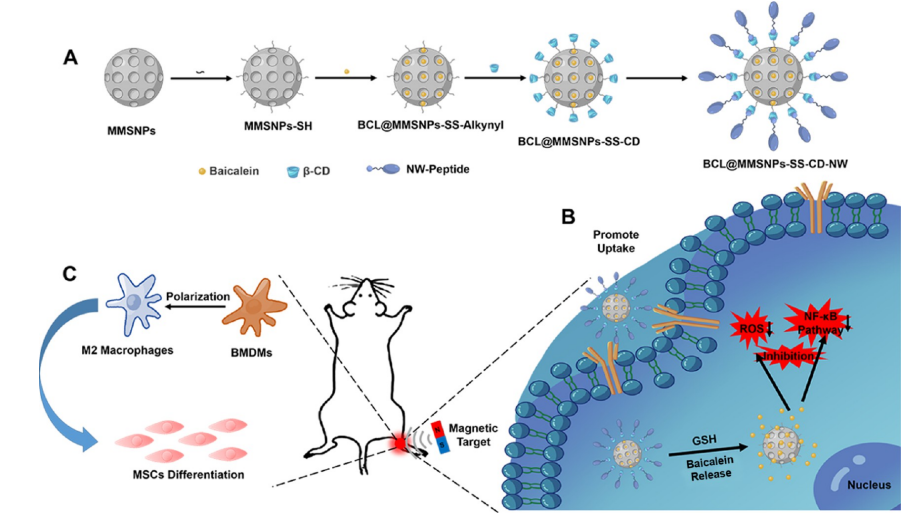In November 2021, multiple research findings of Professor Liu Guohui’s team from Union Hospital, Tongji Medical College, Huazhong University of Science and Technology were published online in the international famous journals Small (IF: 13.281), Bioactive Materials (IF: 14.593), and ACS Applied Materials & Interfaces (IF: 9.229).
The treatments of diabetic wounds remain a major challenge in clinical practice. The team of Professor Liu Guohui and the team of Professor Feng Qian from Chongqing University designed a novel type of HA@MnO2/FGF-2/Exos hydrogel that can be injected in situ to promote the healing of diabetic wounds. The in vivo and in vitro research results demonstrate that the use of HA@MnO2/FGF-2/Exos hydrogel can accelerate the healing of diabetic wounds and provide a feasible strategy for chronic diabetic wound repair.


Research findings "All-in-One: Multifunctional Hydrogel Accelerates Oxidative Diabetic Wound Healing through Timed-Release of Exosome and Fibroblast Growth Factor" were published online in Small
The team of Professor Liu Guohui found that PD-L1 plays an active role in the process of fracture repair. Therefore, in this study, PD-L1-overexpressed exosomes are extracted to promote fracture healing. Meanwhile, the team of Professor Liu Guohui and the team of Professor Feng Qian from Chongqing University designed and synthesized an injectable HA/Gel hydrogel for load delivery and sustained release of PD-L1-overexpressed exosomes. The research team found that exosomes was capable to send “Don’t eat me” signals to T cells at the fracture site through PD-L1, thereby reducing local inflammation and promoting fracture healing.


Research findings "Exosomal PD-L1 Induces Osteogenic Differentiation and Promotes Fracture Healing by Acting as an Immunosuppressant" were officially published online in Bioactive Materials
Baicalein (BCL), as a traditional Chinese medicine extract, has multiple functions such as anti-inflammatory, anti-oxidant, anti-cancer, and anti-diabetic effects. However, due to its limitations in targeting macrophages and systemic toxicity, it is rarely used in the treatment of bone fractures. Therefore, the team of Professor Liu Guohui and the team of Professor Qiu Wenxiu from Wuhan University of Science and Technology designed a novel kind of magnetic mesoporous silica nanoparticles (MMSNPs) for targeted delivery of BCL to the fracture site. The BCL was loaded into MMSNPs via a series of decoration such as sulfhydrylation and alkynylation. And the cyclodextrin was modified as the gatekeeper for BCL. Furthermore, the peptide NW, a peptide that could target to macrophages, is modified on the surface of MMSNPs via the interaction of host-guest effect between adamantane and cyclodextrin. The NW peptide-mediate macrophage targeting then promotes the uptake of BCL@ MMSNPs-SS-CD-NW into macrophages. Subsequently, the BCL is released from MMSNPs due to the removing of CD resulting from the cleavage of disulfide linker by intracellular GSH. Meanwhile, the content of intracellular ROS will be decreased and the NF-κB pathway will be inhibited (Scheme 1B), which will lead to the polarization of M2 phenotype macrophages from bone marrow-derived macrophages (BMDMs) and promote the differentiation of MSCs. The targeted nanoplatform successfully solved the limitation of BCL in targeting of macrophages at the fracture site, and meanwhile greatly reduce its toxicity to the whole body.


Research findings "Dual-Targeted Nanoplatform Regulating the Bone Immune Microenvironment Enhances Fracture Healing" were published in ACS Applied Materials & Interfaces
The team of Professor Liu Guohui will continue to study in an in-depth manner on the application of biomaterials in wound healing and fracture repair, and endeavor to perform much better clinical translational research.
Source: http: http://old.whuh.com/articles/15685.html
Written by: Dept. of Orthopaedics
Edit by: International Exchange Office




